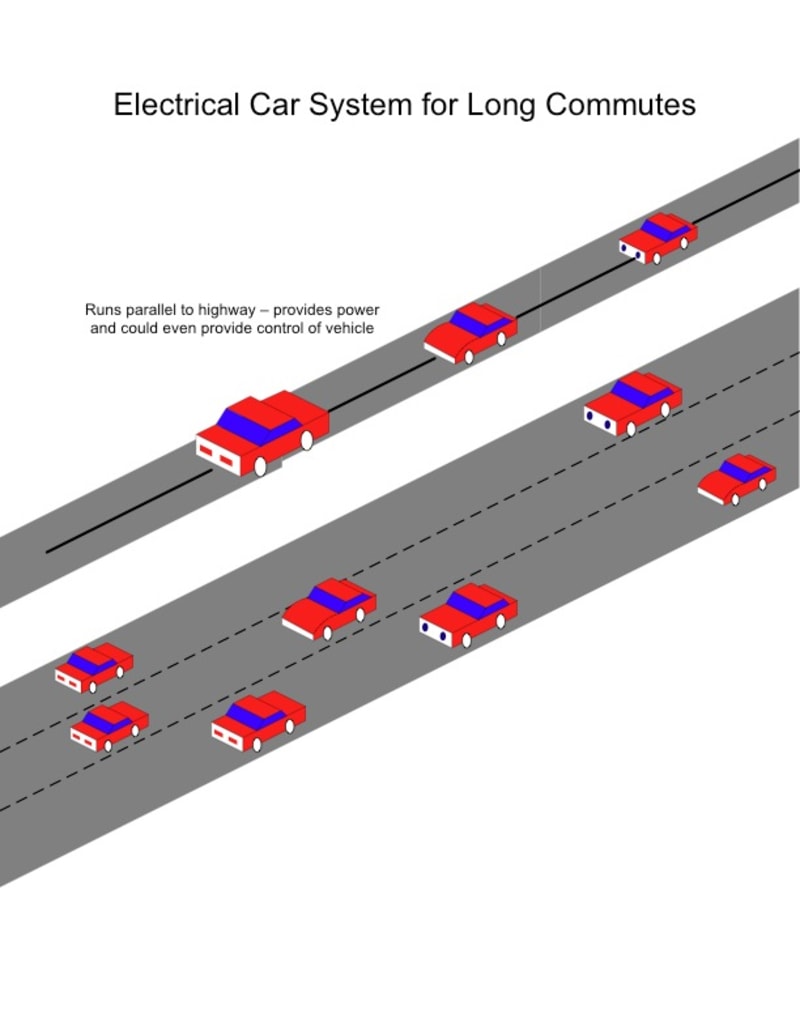Electrical automobiles may be the best answer to minimize greenhouse gasses and decrease the cost of commuting. While electrical automobiles have been around for a long time, the current designs are best for short trips around the city. Ideally, the traveler can get to work and get home with only one battery charge, so that the car can be recharged overnight in the owners garage. For longer commutes, electrical cars cannot be used. What if I had an electrical car tha't I could drive for unlimited miles on certain highways? Perhaps this car could be driven as usual on normal roads, but when on the special highways it would drive itself, allowing me to have some coffee and read the paper! This concept is well within today’s technical capabilities. The worst problem would be coordination: automobile manufactures, electrical companies and highway departments all working together to make this a reality. The basic concept is a cross between an automobile and an electrical trolley car. An electrical car would have a connector that could hook up to a side rail or road rail. The rail would provide power to the vehicle and would also take control of the vehicle while the car is attached.
My ideal first application would be the “Mass Pike” (Massachusetts Turnpike) that is taken by thousands of commuters each day. The driver would have his car charged up at home with enough power to get the car to the Pike. The driver would enter the pike on a special entry way that would allow connection to the rail. This could be a new lane to the right of the breakdown lane. Once connected to the rail, the driver would enter the desired exit location using a special screen in the vehicle. This screen would have a map similar to a GPS system that showed the driver the car location and expected arrive time. The control system would take over guiding the vehicle onto the road and keeping the speed at a predetermined value. Since the control system would have situational awareness of all the cars in the system, it could probably allow the commuting vehicles to be fairly close to each other while under system control. After the driver gains confidence in the system, he or she could begin to relax, have some coffee, even read the paper. When the car reaches the desired exit, a buzzer sounds to alert the driver; the system switches the car onto the exit ramp, detaches from the rail, and relinquishes control back over to the driver. The Pike already has automatic toll sensors that charge for access to the highway. It would not be a problem for the system to compute the amount of electrical charge used for the trip and to recharge the cars batteries. The driver could now use normal roads to drive to work, put in a day’s work, and then head back to the Pike for the trip home.
Like this entry?
-
About the Entrant
- Name:George Jumper
- Type of entry:individual
- Software used for this entry:Visio 2007
- Patent status:none





